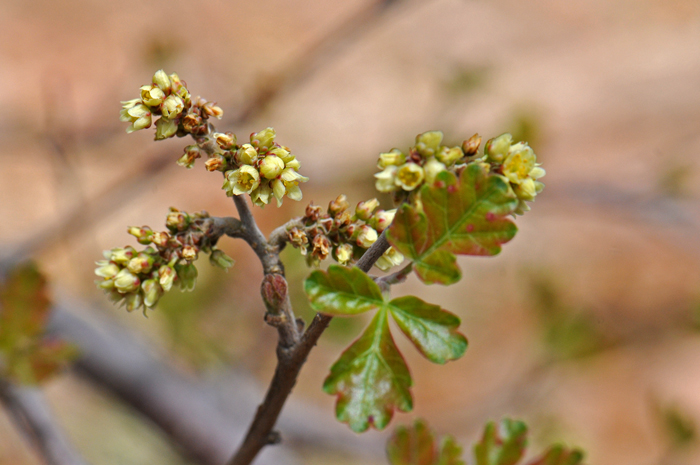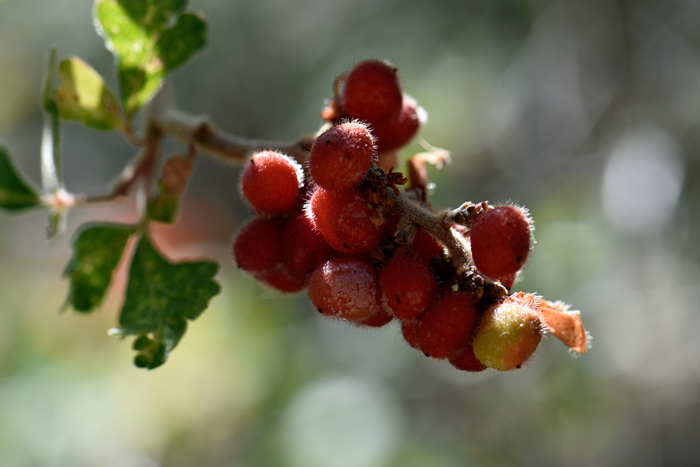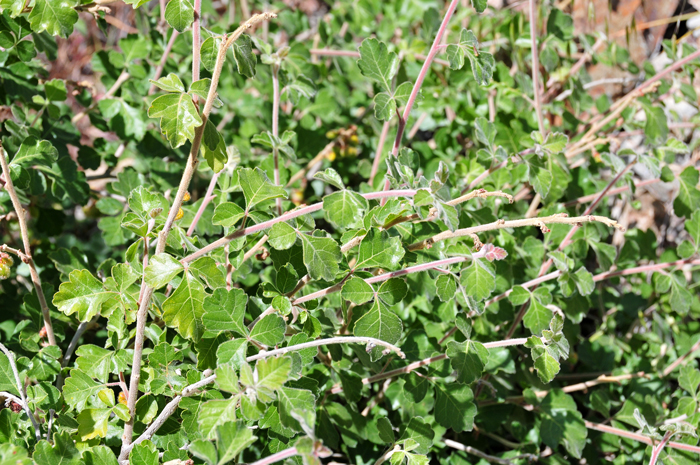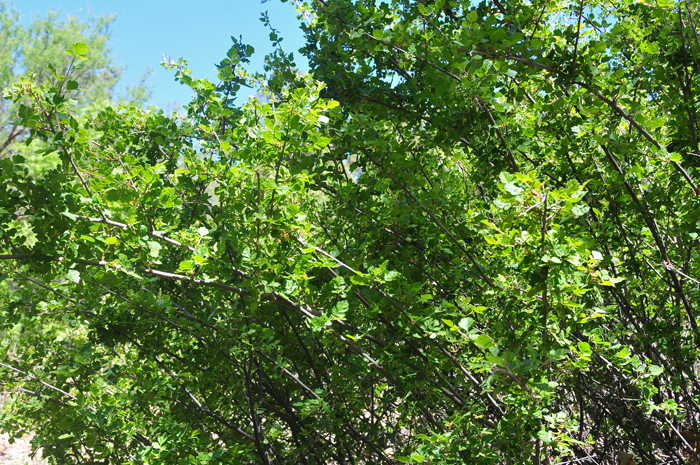Rhus trilobata var. trilobata, Skunkbush Sumac




Scientific Name: Rhus trilobata var. trilobata
Common Name: Skunkbush Sumac
Also Called: Aromatic Sumac, Basketbush, Fragrant Sumac, Ill-scented Sumac, Lemon Sumac, Polecat Bush, Scented Sumac, Skunk Bush (Spanish: Limita, Aigritas)
Family: Anacardiaceae, Sumac Family
Synonyms: (Rhus aromatica ssp. flabelliformis, Rhus aromatica ssp. trilobata, Rhus aromatica var. flabelliformis, Rhus aromatica var. trilobata, Rhus trilobata, Rhus trilobata var. anisophylla, Rhus trilobata var. quinata, Rhus trilobata var. racemulosa, Rhus trilobata var. serotina, Rhus trilobata var. trilobata, Schmaltzia trilobata)
Status: Native
Duration: Perennial
Size: Up to 8 feet or more and 6 to 10 feet wide.
Growth Form: Shrub, erect, multiple branches, arching, ascending; plants woody with disagreeable scent.
Leaves: Green; deciduous, flat; alternate, leaves trifoliate, the terminal leaflet often has several lobes, leaves are without pubescence; leaves fragrant; mature leaflets coarsely-toothed.
Flower Color: Yellow or whitish-yellow and bright red; inflorescence appears before leaves; flowers sessile on tips of short stiff branches; fruit a hairy, sticky, bright red or red-orange drupe.
Flowering Season: March to May or later; March to May in California; March to April in Texas.
Elevation: 2,500 to 7,500 feet; below 6,500 feet in California.
Habitat Preferences: Wide-ranging; mid to upper deserts, mesas and lower mountain habitats; common on slopes, canyons, rocky hillsides; variable plant communities where it is found in chaparral, madrean pine-oak woodlands, pinyon-pine woodlands ponderosa pine forests and riparian communities.
Recorded Range: Rhus trilobata var trilobata is native mostly to the western ½ of the United States; to Alberta and Saskatchewan, Canada and to Baja California and Mexico.
North America & US County Distribution Map for Rhus trilobata var. trilobata.
U.S. Weed Information: No data available.
Invasive/Noxious Weed Information: No data available.
Wetland Indicator: No data available.
Threatened/Endangered Information: No data available.
In the Southwestern United States: Arizona and Texas each have 7 species of genus, California has 5 species, Nevada has 2 species, New Mexico has 5 species and Utah has 3 species. All data approximate and subject to revision.
Comments: Skunkbush is so named because it gives off an odor when the leaves or stems are bruised or intentionally crushed. This odor is ill-scented to some while fragrant to others. Its scientific epithet "trilobata" is a direct reference to its trifoliate leaves.
In Southwest Desert Flora also see; Kearney's Sumac, Rhus kearneyi, Littleleaf Sumac, Rhus microphylla, Smooth Sumac, Rhus glabra and Sugar Sumac, Rhus ovata.

